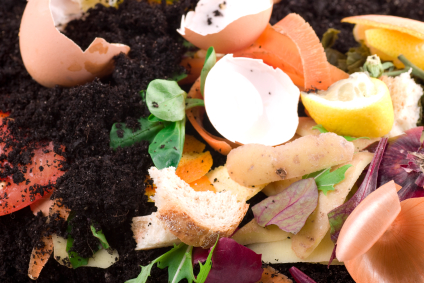Food is nature’s gift– well, nature and all the people who grew it and brought it to us. But we seem to be ungrateful, wasting about 40% of what we produce. Dana Gunders, writing for the Natural Resources Defense Council, reminds us that all this food represents the use of water, land, energy, and lots of chemicals that aren’t all good for us. As I wrote in The Green Foodprint:
There is no waste in nature. Every plant, animal, rock, and drop of water is broken down and reused. Fallen trees, leaves, the shells left by a nut-eating squirrel, and the fur or feathers left by a predator are recycled in the ecosystem, decaying and becoming soil in which new plants and animals can live and grow.
We humans have disturbed this cycle, taking unwanted material to landfills, where it is junked with old batteries, turpentine, plastic containers, and other unnatural trash to be sealed off for decades. Waste occurs at the farm, the factory, the store, and the kitchen. Thirty percent of food, worth $48 billion, is thrown away every year just by households. Wasting food also means wasting water. One hamburger, for instance, takes over 600 gallons of water to produce. Food sent to the landfill also generates methane, a greenhouse gas much more damaging than carbon dioxide.
Let’s learn from nature and eliminate the whole concept of waste. Some companies have already spotted the opportunity. In New Jersey, a new plant (creating local jobs) will put food waste into huge digester tanks with oxygen, microbes, and heat, to turn it into compost and fertilizer. Now that’s recycling to the nth degree!
What you can do:
✓ Serve yourself only as much as you’re likely to eat.
✓ Save and use leftovers.
✓ Learn new recipes for using them
✓ Compost the rest.


